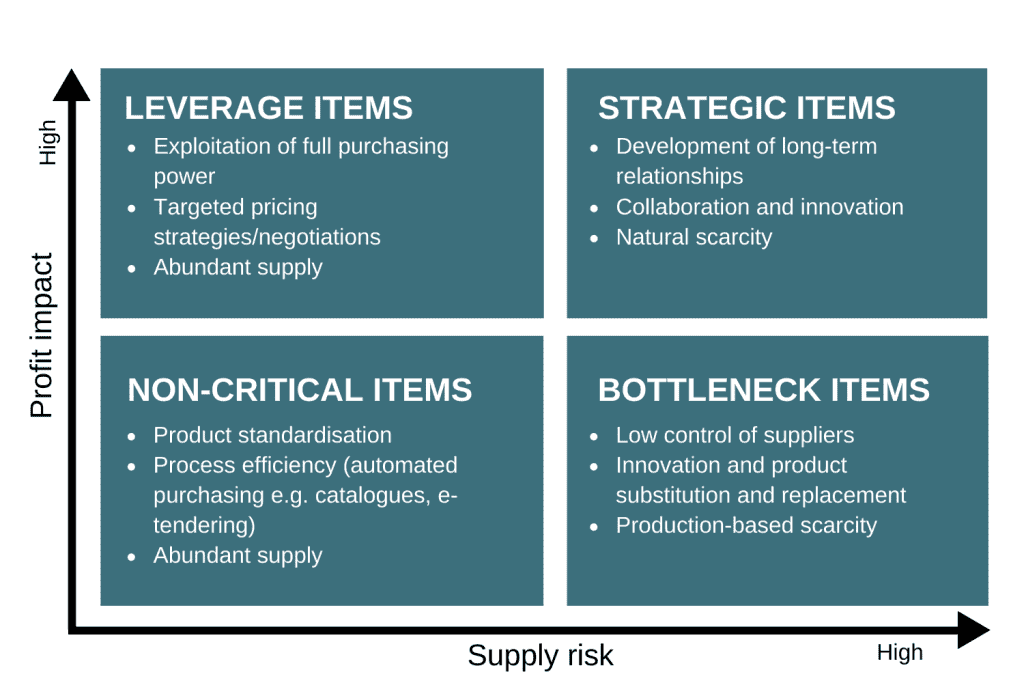The Kraljic Matrix: Using procurement tools to help you win
By David Lunn, CP APMP, MCIPS
A recent conversation with a Melbourne based client once again reminded me of how an understanding of procurement theory can help suppliers submit better bids.
Our client was keen to share the news that it had been invited to bid for an upcoming tender. My contacts were excited at the prospect, believing that the invitation signalled a good chance of success.
Having worked buyer-side for more than 25 years, I could see some immediate red flags. What was the underlying motivation for the invitation? What sort of relationship was there between our client and the buying organisation? And, most importantly, how was the buying organisation likely to be treating this supply in the scheme of the many other goods and services it was acquiring.
This last point is especially instructive. Procurement professionals are usually targeting achievement of objectives much broader than simply securing contracts for goods and services. So, what are these objectives and how can procurement theory help suppliers identify them, so they can submit more compelling bids that better reflect what the buying organisation actually wants?
The Kraljic Matrix
A piece of procurement theory that our clients find useful is The Kraljic Matrix. Originally published in Harvard Business Review (1983), Kraljic targeted a buyer audience, proposing the following 2 x 2 matrix to segment suppliers, resulting in a more efficient use of buyer organisation resources.

Source: Peter Kraljic, HBR
Given its buyer side orientation, what insights can The Kraljic Matrix offer suppliers?
Put simply – a lot. Through plotting supply risk against profit impact, the Kraljic matrix neatly describes 4 main purchase types and the characteristics of each. By having a clear understanding of these purchase types, suppliers can better appreciate the buyer’s perspective and anticipate their purchase objectives and tactics, while also gauging how much leverage either party may have in eventual contract negotiations and subsequent contract management activities.
To return to our client example, it supplies what Kraljic would consider to be leverage items. Their supplies represent a relatively large expense to the buyer, but due to their abundant supply, pose very little operational risk. Accordingly, it’s in the buyer’s best interest to encourage competition for supply, thereby keeping prices low and improving profitability.
So, while our client was flattered to be invited to tender, the reality was that they were probably being invited to a price shoot out. It was a classic iceberg situation i.e. our client saw the 10% above the waterline but missed the 90% lurking underneath. A simple application of the Kraljic Matrix would have enabled them to see the situation for what it was and either no-bid, pursue an aggressive price based strategy, or play a longer game by transitioning their offer into Kraljic’s strategic items quadrant by developing product innovations that are meaningful to the buyer, while also introducing an element of supply scarcity.
Understanding the buyer to be successful
I’ve shared the Kraljic Matrix with many seller-side clients over the last decade and it’s always helped them to interpret the true dynamics at play within any given purchase situation. It enables them to adopt the purchaser’s perspective and work with more clarity to submit bid responses that align more tightly with the purchaser’s objectives.
From a professional perspective, it reinforces my view that tendering is truly a 360-degree activity. Perennially successful suppliers understand that in order to submit a compelling bid, they must understand their buyer. In that regard, the reverse application of procurement theory has much to offer.
